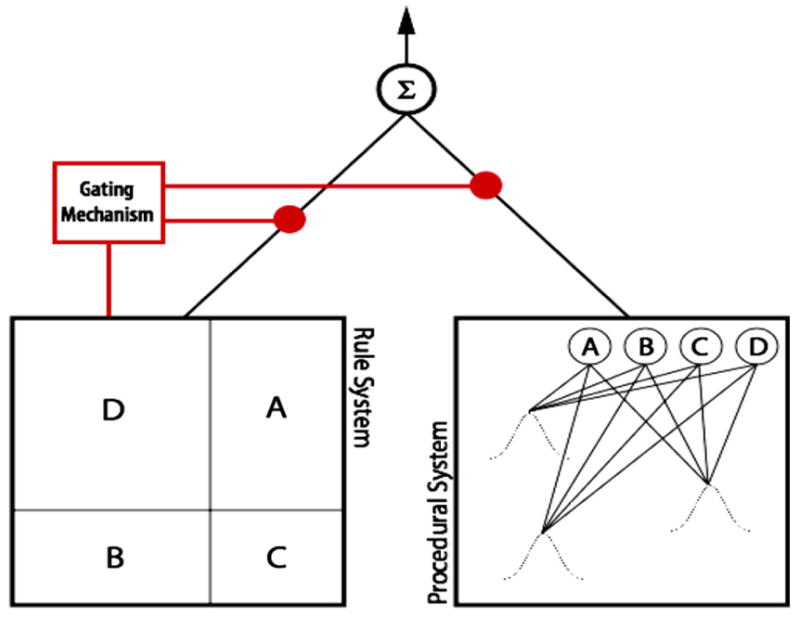Fig. 2.

One possible instantiation of the rule and procedural systems. The rule system is modeled as a Bayesian model that optimally updates the probability of each hypothesis according to the current stimulus and the feedback. Full feedback is more effective in discriminating among competing hypotheses than is minimal feedback. Each hypothesis corresponds to two intersecting and perpendicular decision bounds with each rectangular region assigned to one of the four possible categories. One such hypothesis is shown in the left side of the figure. The procedural system uses reinforcement learning and a covering map of Gaussian receptive fields to estimate the value of each action (i.e., the anticipated accuracy of responding A, B, C, or D) for each stimulus location. Because this system estimates rewards, rather than updating hypothesis probabilities, it is only concerned with the correctness of its responses, which is equivalently signaled by minimal and full feedback. The performance of the rule system governs whether the rule system or the procedural system determines the overall response. When the rule system is performing at a high level, the gating mechanism is more likely to allow the rule system to continue determining the overall response rather than passing control to the procedural system.
